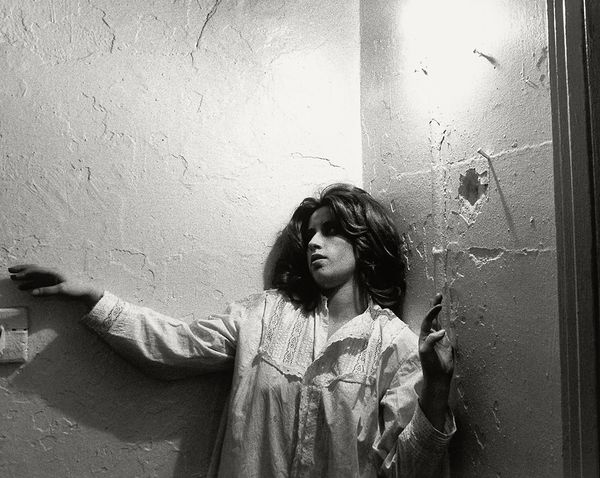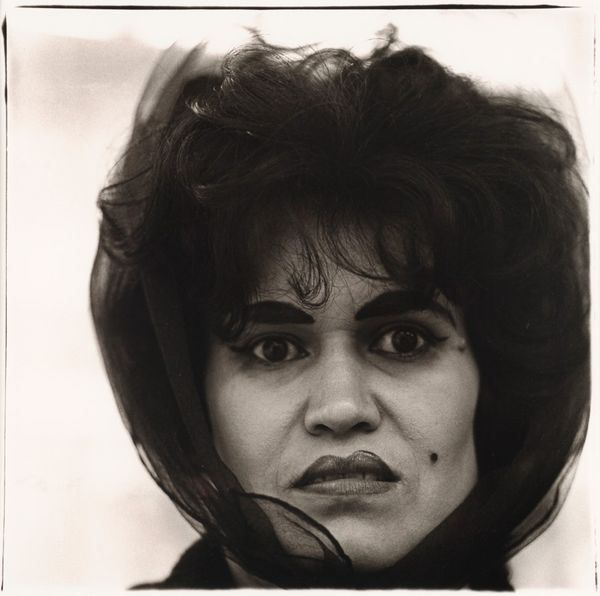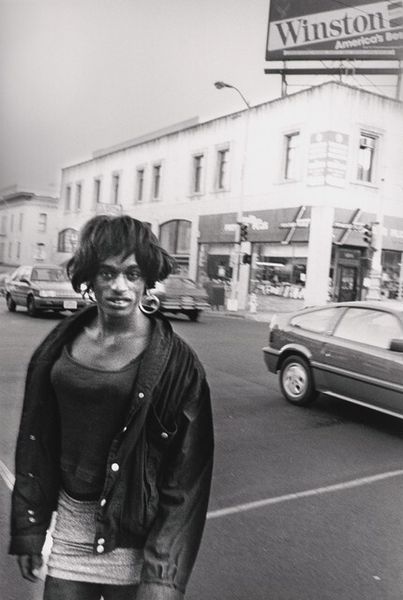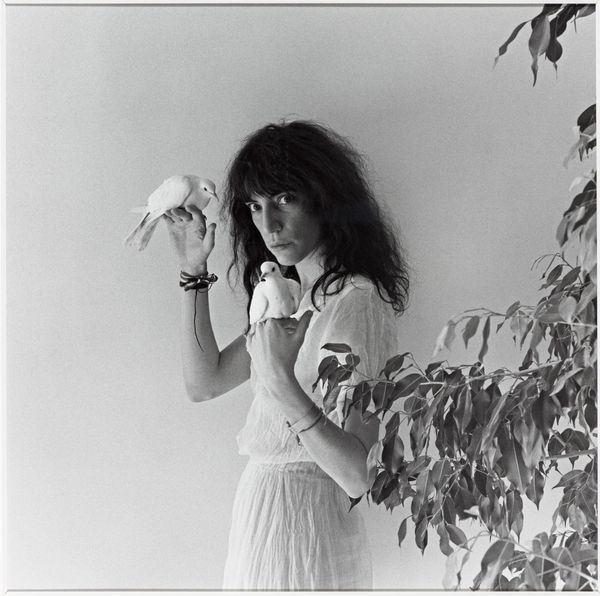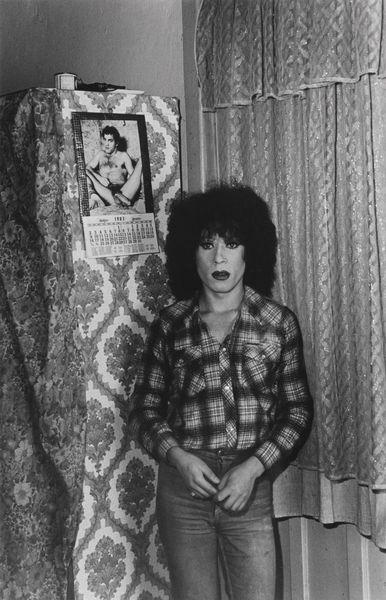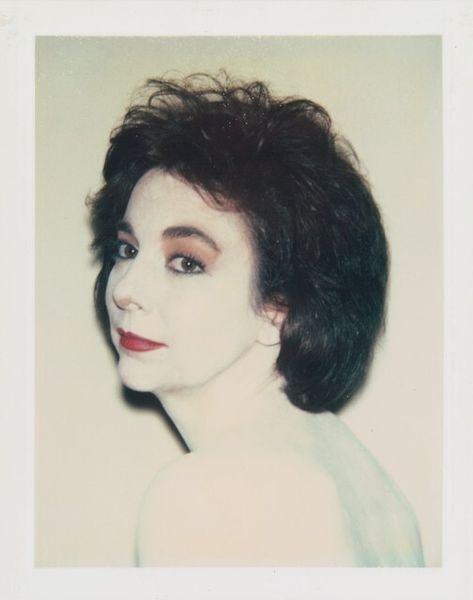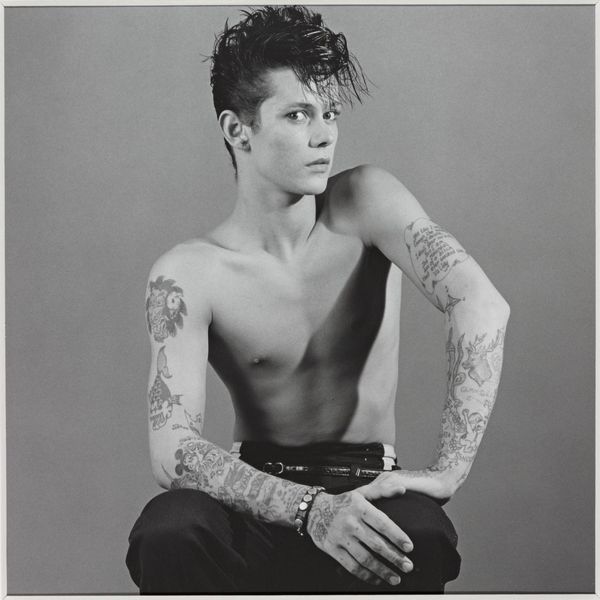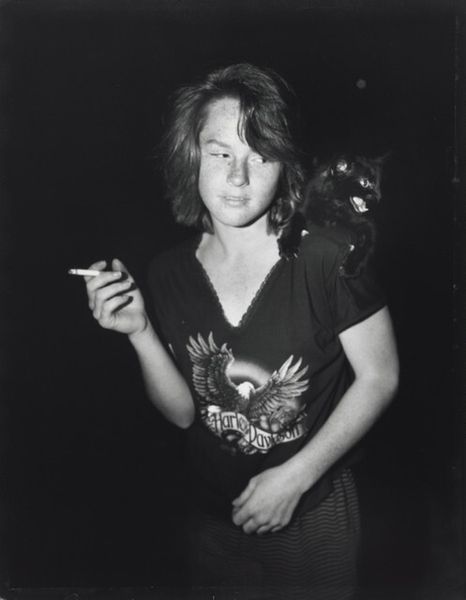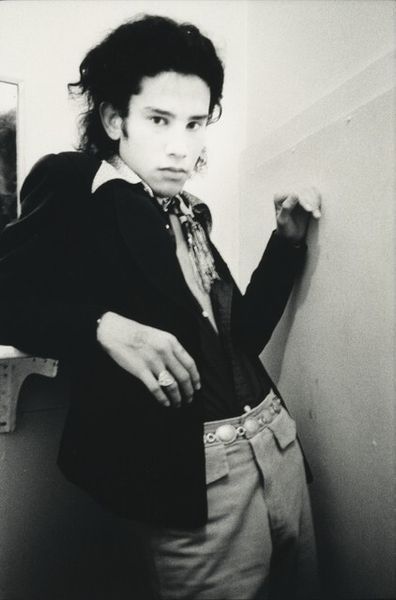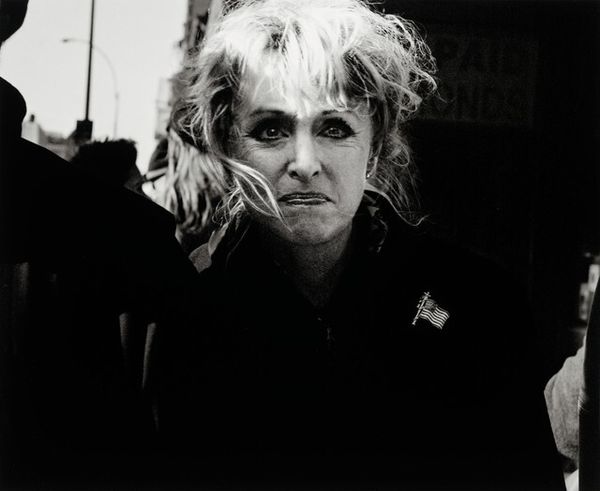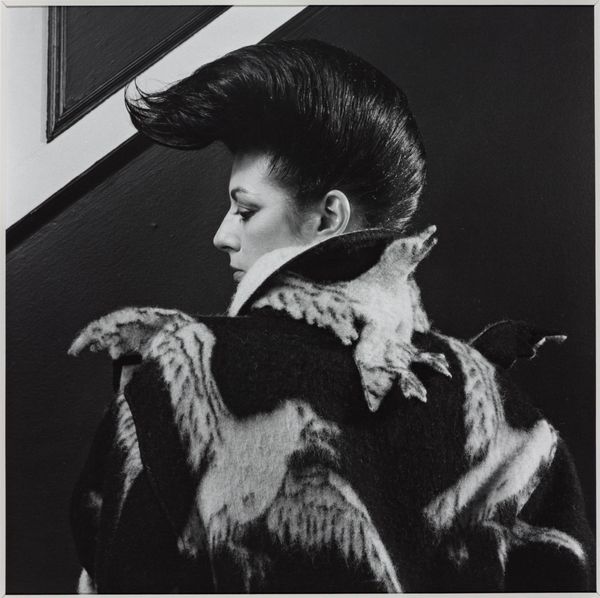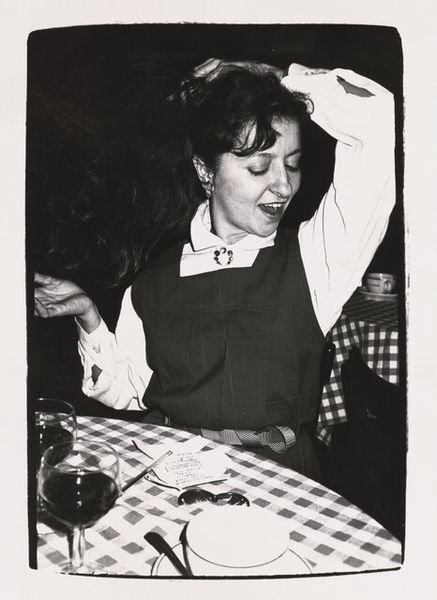
#
black and white photography
#
cool tone monochrome
#
black and white format
#
b w
#
black and white theme
#
black colour
#
black and white
#
monochrome photography
#
black colour rhythm
#
monochrome
Dimensions: sheet: 35.4 × 27.6 cm (13 15/16 × 10 7/8 in.) image: 32.4 × 21.3 cm (12 3/4 × 8 3/8 in.)
Copyright: National Gallery of Art: CC0 1.0
Curator: This evocative photograph, “Crystal Fucked Up,” is by Jim Goldberg, possibly taken between 1991 and 1994. It's a stark, black and white image. What’s your immediate reaction? Editor: Grit. That's the word that hits me first. The grimy urban landscape, the raw emotion on her face... it feels almost invasive, like we're intruding on a private moment. Curator: The high contrast certainly amplifies that sense of unease. Notice how Goldberg uses shallow depth of field. Crystal is rendered in sharp focus while the background fades into an abstract blur. Editor: Absolutely, you can almost taste the city dirt. It makes me wonder about Crystal. I mean, "fucked up," right there in the title – it's blunt, unflinching. Is this just about her, or a commentary on the precarity of youth itself? The phone booth seems almost like a confessional. Curator: Semiotically, the phone booth serves as an intriguing symbol. It represents a broken link – the promise of connection juxtaposed against isolation and, as you suggested, confession, even judgment. And consider Crystal’s presentation. She appears to present the classic elements of youth in revolt – rebellious fashion and an attitude which rejects any norm. Editor: There’s also an intense vulnerability there, isn't there? Her eyes, her slightly parted lips, her messy hair... it’s like she’s on the verge of falling apart, right there in public. But then, the light gives the overall image an angelic atmosphere, too. Goldberg makes light the silent subject. Curator: Goldberg’s photographic choices function as both structural and symbolic devices, shaping not only the visual impact but also layering thematic complexity through chiaroscuro techniques. Editor: It feels authentic. A lot of photography that wants to appear to tell authentic stories gets hung up in idealising those moments, or beautifying those stories. But this makes sure you confront what is unpleasant to consider. You’re made to think, or at least reflect, and you end up caring, really caring, what happens to this girl. Curator: It’s this duality between harshness and empathy, presented through composition, that defines the strength of the photograph. Editor: It’s haunting, for sure. It reminds us that beauty and struggle are so often intertwined. It's a punch in the gut that makes you stop and actually see someone who might otherwise be invisible.
Comments
No comments
Be the first to comment and join the conversation on the ultimate creative platform.

